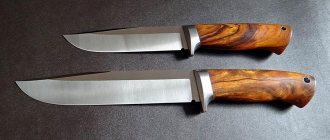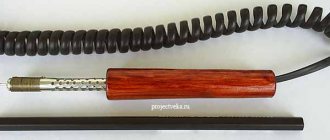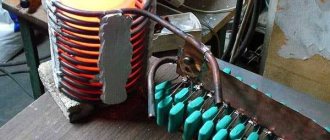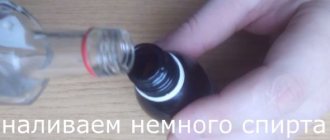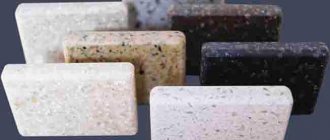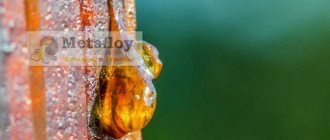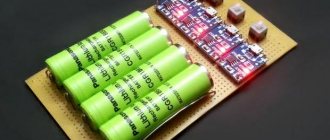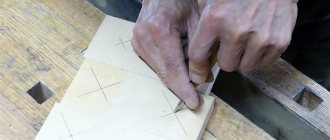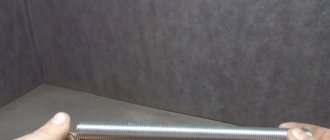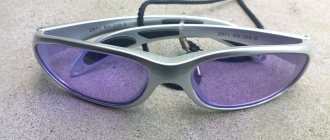Commercial production of honey also involves the production of other beekeeping products: propolis, wax, beebread, etc. Some beekeepers prefer to sell them and receive additional income. Others, if possible, try to use the obtained bee products in their farms. We are talking about wax and foundation made from it, which is constantly needed in any apiary.
Features of making foundation
To obtain beekeeping products, it is important to create a high-quality base for them - foundation.
It is not difficult to obtain, provided you have the equipment. Today, there are both vintage wax rental machines and new electrical equipment on sale. Special press machines are also used.
The natural product is wax pressed into a sheet, having a thin thickness and a cellular surface. Bees need cells for more efficient construction of honeycombs, as well as for producing strong and healthy offspring. Their depth and size should be as similar as possible to natural honeycomb cells.
Plastic foundation is also used. This is an artificial product that does not change properties for up to 10 years. It is also suitable for home honey production and bee colony raising, but has its disadvantages. The use of artificial engraved plates leads to an increased risk of infection of apiary inhabitants with ascospherosis and other infectious diseases. It is better to resort to making foundation on rollers, made on the basis of beeswax.
Types: natural, with additives, plastic foundation
With the development of technology in beekeeping, not only natural, but also synthetic components began to be used in the production of foundation. Depending on the type of raw material from which it is made, foundation can be made from several types of materials:
- Natural. It is made from beeswax after it has been cleansed of impurities: propolis, wormwood, food residues. Such raw materials are very plastic and can be easily deformed, but natural foundation is easy to attach to the frame. Its main advantage is its naturalness;
- With additives. Paraffin (mainly) and other chemical compounds can be used as additives. Such raw materials are more resistant to temperature increases than natural ones, but are more fragile and harder to coat;
- Plastic . A completely artificial product that can last up to 10 years if treated with care, but cannot be restored after breakage. In addition, it requires mandatory coating with a thin layer of wax for better adaptation to the hive.
Important! If we consider the types by thickness, then the most popular among beekeepers is nesting foundation , 1 kg of which contains 18 sheets. Store-bought foundation is the thinnest (up to 65 sheets). However, it requires increased labor costs from bees. Reinforced wax contains 3 fewer sheets than nested wax, but is particularly strong because it consists of 3 layers of wax. This type is the most common in homemade production.
Do-it-yourself foundation can be made by any beekeeper with a certain amount of ingenuity, hard work and free time. Such a product will provide bee colonies with a clean and high-quality basis for future honeycombs, and will allow the beekeeper to use unsold bee products on his farm.
Making foundation with your own hands in various ways is well described in numerous video materials.
How to make a mini lathe yourself?
Any production must begin with the development of the project.
- At the design stage, specifications are developed. Specifications are a list of parts included in an assembly.
- There can be quite a lot of nodes in an installation. Some details may be repeated. But there may also be the presence of many very diverse blanks. The designer should strive to unify the parts used as much as possible, only then will the product be competitive in cost.
- After the first design stage, the selection of components begins. It will allow you to determine the actual design, where there will be a minimum number of original parts. Then it is easier to produce a working sample.
- When picking, parts are identified that are impossible to do without. They will have to be made. Everything else is cheaper to buy.
Lathe projections:
Most attention is paid to the headstock. The engine is located here, and a cartridge is installed at the same time. For wooden products, three-jaw fasteners are rarely used. Drive chucks are more often used; they require initial centering of the workpiece, and then installation of a driver, which will rotate the workpiece.
Lathe headstock option:
Some craftsmen make a drive from a drill. They have enough power (among modern power tools you can choose a drill up to 2…3 kW). They have a mechanism for smoothly changing the rotation speed. There is also a reverse.
Novice craftsmen are often interested in how much a small machine made by themselves costs. Sometimes a product will cost almost nothing, since components can be found for free. All that remains is to correctly assemble the machine and start using it effectively.
How to make wax with your own hands
Making honeycomb frames yourself is rare. However, starting a line at home for the production of foundation is quite simple.
Necessary equipment
You don't have to buy expensive equipment to create wax plates. It is possible to purchase hand rollers and a press. Rules for choosing devices:
- materials meet quality and safety requirements;
- rollers and working area made of aluminum coated with thin layers of nickel and tin;
- acquisition of ready-made production forms;
- additional purchase of a cooling system to preserve the cellular structure;
- The principle of operation of the assembled machine is a waffle iron, that is, compression of melted wax between two plates with matrices.
With the correct selection of equipment, the technological process will minimize the time required to produce each wax sheet.
Preparation
Preparation of containers used for hot water, melted wax and the finished specimen. The stencil is created from available materials: wood, rubber. Silicone templates are most often purchased. Equipment parts must be treated with drying oil.
Production begins with calculating the amount of wax required to produce a set number of plates. Calculations are performed individually.
Manufacturing
Step-by-step implementation of technological processes for producing plates at home:
- Melt the wax, clean the liquid mass from visible impurities and contaminants.
- Determine humidity. If it is above 2%, then evaporate the water by putting it on low heat.
- Melt over steam using two containers. Pull out the finished sheet and throw it over the edge of the bath.
- Pass the sheet between the rollers. They are pre-cooled to prevent the wax from sticking.
- Dry the finished foundation plates in natural conditions.
The disadvantage of independent production is that it wastes the beekeeper’s time, which distracts him from pressing matters in the apiary. However, when automating your own mini-shop, the wax processing time is noticeably reduced.
Homemade wax production is becoming increasingly widespread among beekeepers, so here we will try to describe the entire process, so to speak, from A to Z, from wax melting to placing foundation in bee colonies. All bees are very sensitive to any foreign object in the hive, so why not give them pleasure and brighten up their short life by making foundation from the highest quality beeswax.
First of all, everyone melts the wax in their own “classical” way, i.e. who knows how and who can. You can use boiling in water and mechanically releasing the wax from the “shirts”. The boiler is a double-walled, stainless steel container with a mesh basket inside and equipped with a device for pressing out. These are just two possible ways to obtain wax.
The first method is to boil old sushi in water in a saucepan or pot, and this mass is poured into a preheated wax melter. In the middle, in the basket, there is another bag. Under the wax furnace there is a heat source (gas burner or wood stove). Water boils in the space between the walls, and the resulting steam is directed inside the wax furnace. During pressing, the wax flows through the lower outlet along with water and steam into the prepared container, where it gradually cools. The efficiency of such a wax refiner is close to 90%, so that no more than 10% of wax remains in the combustion chambers.
The second method is to obtain wax by separation. The boiled mass is poured into a separator, the drum of which has a large number of small holes for the release of wax. Inside, again, there is a bag. Once filled, the bag is tied, the separator is closed and the centrifuge is turned on. Wax with hot water flows into the placed container through the outlet. The separator is equipped with an electric heater so that the wax in it does not cool down. The efficiency of such a separator for separating wax is about 80%.
It is recommended to have a solar wax grinder in the apiary. In this case, the financial costs are the lowest of all other known types of wax melters. The sun does all the work, and the result is pure wax of a light yellow color without any “shirts”.
A steam wax furnace combined with a wax press to produce wax is a highly productive device, since as a result, only a paper-thin layer of compressed cocoon “shirts” remains in the combustion chambers. At first glance you can see that there is almost no wax left in it. According to experience, the efficiency of such a wax refiner is almost 90%.
The honeycomb is placed in the wax furnace, water is poured into the compartment to produce steam, the lid is closed, and all you can do is watch how the beautiful yellowish wax flows out into the container placed for this.
Simple calculations show that when using electricity with a heating element power of 2 kW at an average price for electricity of 5.5 Kč per 1 kWh (about 85 rubles), 2 kWh are consumed per bookmark, which in monetary terms will be 11 Kč. And during this time we will receive 2-3 kg of wax, which, given the current purchase price for wax of 80 Kč (1250 rubles) per 1 kg, will give us at least 160 Kč (2500 rubles), and if we use other types of energy (gas, firewood), then the winnings will be even greater.
And the figures given are enough to understand all the economic benefits of obtaining wax. But here we are talking about obtaining wax for making foundation yourself. The wax circles need to be boiled again in water in an enamel (without chips or cracks in the enamel) pan; You can use aluminum or food grade stainless steel. Other materials are not suitable for contact with wax, as they spoil the wax, coloring it dark. Use soft rainwater, distilled or demineralized water in a ratio of 1 part wax to 10 parts water. After boiling for a short time, the wax is placed in a kind of thermos - in a sealable foam box, so that the wax cools as slowly as possible and gets rid of the last traces of dirt. After cooling, the dirt from the bottom of the wax circle is scraped off, rinsed with cold water and placed back in the same pan, but without water, to be disinfected by boiling at a temperature of 117 ºC for an hour. These are the requirements of the State Veterinary Service in the Czech Republic. To monitor the disinfection process, the only thing required is a recording thermometer. But if you make wax for yourself and from your own wax, then a digital thermometer at 600 ºС, sold in an electrical goods store for 200 Kč, will be sufficient.
After disinfection, the wax is left to cool to a temperature of 75 ºC and poured into molds. For the first time, an ordinary kitchen baking sheet, enamel or aluminum, is enough. The baking sheets are first coated with a brush with a thin layer of honey water or baby soap emulsion so that the wax then easily comes off the mold. The wax is poured in a layer of no more than 7 mm, otherwise the production of foundation will require smooth rollers to roll out the workpiece to the desired and uniform thickness. After about 10-12 minutes. we get a casting that has cooled down enough that it can be peeled off. Some people place such blanks in cold water so that they can be stacked without fear of them sticking together. These wax blanks must mature within a few days. Then they are placed in a container of water, maintaining the water temperature at 37 ºС. This is necessary for better rolling. If the temperature of the wax is higher or lower, then its sheets will tear in the rollers and stick during the production of foundation. The rollers are thoroughly lubricated with lubricant (soapy water) and rolling begins directly, feeding wax blanks on one side, and receiving a long ribbon of finished soft foundation on the other. From a wax casting 40 cm wide and 7 mm thick, a strip of foundation about 5 m long is obtained, which is immediately cut to specific sizes. This foundation rolls well, is strong and flexible, does not tear or break when secured in frames. For small frames for comb honey, it does not need to be equipped with wire.
Michal Řiha, Včelařstvi No. 4/11
Per. from Czech V. Efimov
Share with friends
Foundation for bees at home
The machine that produces foundation is called a roller. The tool can be found in retail outlets or built with your own hands. The complexity of the mechanism lies in the relief surface: the dimensions of the cells must match the dimensions of the honeycombs that bees make.
The main components of the design include:
- 2 engraved drums that are coated with a polymer composition to prevent wax sticking;
- adjustable bolts that allow you to reduce or increase the interval between shafts;
- 2 gears that give the rollers forward rotation;
- a base that serves as a mount for other pieces of equipment.
Attention! The quality parameter of honeycombs is compliance with equal dimensions of cell angles of 120°. Only the fulfillment of this condition on the convex surface of the rollers will allow the production of high-quality foundation
The initial stage when rolling sheets of wax is the release of blanks.
There are two main methods:
- Pouring into pre-prepared forms. The cleaned and dissolved wax is poured into prepared molds with wooden sides, which are moistened with water ahead of time. The finished sheet, after hardening, is put through the machine. At the output, the workpiece is thicker than the specified value, so the sheet is similar to tape, which is later brought to the standard.
- Coating the sheet with wax. The moistened plywood sheet is placed several times in liquid wax. When they want to get a thin sheet - two, if thicker - more. The two sheets are removed after cooling and run through the rollers. Such a workpiece comes out thinner: based on the size of the mold, the dimensions of the final product are adjusted. Minimum cuttings are obtained.
On a note. For the production of sheets, rollers with a flat surface are used only. The working surfaces (convex and smooth) are treated in advance with a release mixture. Honey or a suspension is used as a solution: glycerin (2 tsp) and unscented liquid soap (100 g) are mixed into 1 liter of liquid.
Equipment
Do-it-yourself foundation and its creation will not require purchasing expensive special equipment. You can buy a press and hand rollers.
Requirements for selecting devices:
- the texture is high quality and safe;
- aluminum rollers and workspace are coated with tin and nickel;
- purchase of prepared forms;
- purchasing a cooling system to preserve the cellular structure;
- The operating principle of a waxing machine is a waffle iron: pressing molten wax between two strips with dies.
The correct choice of design affects the technological process: it reduces the time for producing each sheet of wax.
Production begins with the calculation of the wax required for the production of plates. Calculations are carried out individually.
Production
Technological processes for producing plates are carried out step by step at home:
- Melt the wax, filter the liquid mass from impurities and debris.
- Set humidity. When the indicator is more than 2%, the liquid is evaporated over low heat.
- Melt over steam using two containers. Pull out the prepared sheet and throw it over the side of the bath.
- Pass the sheet between the rollers. Wax sticking is prevented by pre-cooling.
- It’s time to dry the foundation plates under normal conditions.
The disadvantage of making it yourself is the time it takes for the beekeeper, which takes him away from business. But automating your workshop will significantly reduce the time for wax processing.
Ready foundation sheets
Workshop technical equipment
After studying the technological processes, equipment, tools, and materials for the production of foundation are purchased. Main mechanisms and devices: sterilizer, mechanized belt, rollers.
The last element included in the machine for the production of high-quality foundation is the basis of the technological process. Rollers require careful selection, since the result depends on them. They are mechanical and automated.
Each equipment manufacturer has different forms of production. Silicone matrices are widespread and have high quality, extended service life and convenience. If you don’t have the funds to buy an expensive device, then a plastic or cement matrix will do.
A simple way to make your own frame
The reliability of the bed is a key characteristic of the machine. Human safety and the quality of the product depend on the properties of the material and the quality of the connection of the parts of the frame.
Based on these requirements, the choice falls on metal profiles, chipboard, plywood or solid wood (preferably solid wood: oak, birch or the most common: pine).
If the choice is on a metal frame, then you need to choose a channel, an I-beam or a profile pipe that will carry the load-bearing functions of the machine. Here the choice depends solely on the availability of the material, its price and ease of installation. However, the metal frame is the simplest in design: you only need two I-beams, on which the engine, tailstock, tool rest and caliper are then mounted.
If the choice is wood or chipboard, then based on a preliminary sketch-drawing with the existing dimensions of the engine and all other elements, the design of the frame is formed. As a rule, it consists of a table top, which acts as a base, a stand for the tailstock and a box on which the motor and headstock axle are mounted.
In addition, two parallel slats are run between the headstock racks, on which a movable support board is attached. A gap of 5 cm is maintained between the slats. Afterwards, it is necessary to weld the frame with a welding machine - this will give additional strength to the structure.
If the machine is supposed to be a tabletop machine, then there is no need for legs, but when processing heavy and massive elements, the bed should be independent and its stability should not raise questions. In this case, it is necessary to provide legs. They are made from rolled steel, for example, angle or timber.
The dimensions of the machine primarily depend on the goals pursued by the master. Most operations at home are performed with products up to 80 cm in length, so most often the length dimensions of the machine are 80 cm. If the frame is made of metal, then two blanks of equal length are cut with a grinder.
Equipment for the production of foundation: press
The finished factory machine consists of two weighted plates, fastened together with a gap of a certain thickness and with a relief surface in the form of hexagonal cells. To make it easier to remove the finished foundation, the inside of the press is moistened with water, after which wax is poured. The productivity of such equipment is low, and it is more suitable for amateur apiaries.
Building such a device at home is not particularly difficult:
To create a matrix with ready-made cells, one of the solutions (gypsum, silicone, epoxy resin, cement) is applied to a sheet of foundation; After one side has hardened, carefully separate the surfaces, and remove the remaining wax with hot water; The operation is repeated and the finished matrices are attached to the metal plates; After this, they are fastened together in such a way that after hardening the finished sheet has a given thickness.
Pros and cons of artificial foundation
Today's technologies offer more and more innovations. They also did not bypass beekeeping: many beekeepers switched from natural foundation to artificial one. This is due to a number of ADVANTAGES OF THE LATTER:
- Any wax foundation will envy the service life of plastic. You can actively use artificial leaves for up to 10 years.
- To make foundation with your own hands, you need to put in effort and time - or a significant amount of money to purchase. With plastic foundation, these problems are solved, since the cost in this case is more than affordable.
- No need for waxing is another important advantage. The plastic foundation is either immediately inserted into the groove, or the entire plastic frame is used.
- You can be sure that the plastic foundation will not warp in the evidence or in the honey extractor.
However, there are also significant disadvantages to using artificial foundation. It has to be treated with chemicals more often to prevent bee diseases, which is not very useful. In addition, the experience of using plastic foundation is not yet rich enough, so it is difficult to talk about how well the queen lays larvae on such foundation or whether the combs are built normally on plastic. Finally, plastic frames for foundation are quite problematic to make yourself, so you will need initial capital to purchase them.
FAQ. Answers on questions
What is wax?
Foundation is a sheet of wax in which hexagonal shaped indentations are pressed. Recesses are necessary for the rapid construction of hundreds by insects. The foundation is attached to a special frame, which is subsequently placed in the hive.
What is semi-natural wax?
Various impurities are added to semi-natural wax. Paraffin is often included in the composition. You must work with such foundation with extreme caution, since the sheets are not durable.
What are the benefits of artificial foundation?
Typically made of plastic. The advantages of plastic foundation include the fact that it is durable, cheap, and difficult to damage. Plastic sheets are easy to store and do not deform. But such sheets must be treated against viruses and bacteria at least 3 times per season. Frequent treatments have a negative impact on the overall health of the bees and the quality of the product.
What is used to make wax?
Experienced beekeepers use a special device for this - rollers. The working surface of the rollers has the necessary relief (hexagon). A heated wax sheet is passed between them. Foundation can also be made using a press. The working surface consists of two heavy plates with a pattern in the form of honeycomb cells embossed on the surface. The press is less productive and rollers are most often used.
Pressing: simple and effective
The factory press consists of 2 heavy plates that are secured together with a small gap. The surface of the plates is a relief of hexagonal cells. The performance of the mechanism is small and is not suitable for large volumes.
Making your own press is as follows:
- A solution of gypsum, silicone or epoxy resin must be applied to a sheet of factory wax. Some people use cement, but it can be difficult to remove from the foundation. You need to make 2 matrices.
- As soon as the material has hardened, the wax is removed from it without any residue. If it doesn’t come off well, wash it off with water.
- The matrices are fixed on metal plates.
The thickness of the factory foundation varies in the range of 0.2 - 0.6 mm. At this distance you need to fix 2 matrices. Some beekeepers adapt old waffle irons for the press, placing them inside their matrix. This way you can make all types of foundation.
Casting foundation on such a machine is not difficult. It is enough to lubricate one matrix with molten wax and press it with the second for a short time. Then the mold is separated and the finished sheet is removed. To prevent the wax from sticking to the matrices, they are lubricated with a thin layer of vegetable oil or water.
Selection rules
To buy or make foundation, you need to take into account a number of parameters. These include the following:
- material - natural wax, polypropylene or a composition with the addition of paraffin is suitable;
- appearance - the material must be clean and transparent;
- dimensions and weight - according to standards, foundation can have dimensions of 400x260 millimeters and weight 70-80 grams or 400x207 millimeters and 56-60 grams;
- number and appearance of cells - they must have a hexagonal shape and a concentration of at least 10 pieces per 5.5 centimeters.
The size and number of honeycombs produced are determined by the species characteristics of the bees, geographic location and other parameters. For example, for Asian breeds it is recommended to make small indentations, but there should be a lot of them. For European bees, on the contrary, it is worth making fewer recesses, but they must be quite large.
Manufacturing of hand-held equipment
The main advantage of assembling a wax rolling machine yourself is low cost. To make such a device, it will take 3-4 times less money than to buy a ready-made specialized device. You will need to get a drawing, according to which the preparation of materials and workpieces will be carried out.
The manufacturing process of rollers is complex and painstaking. To make rollers, the apiary owner needs to consider:
Cell sizes on the finished product. They vary and depend on the maintenance of bees and the climatic characteristics of the region where the apiary is located. Before constructing the rollers, measurements are taken from the cells. Materials
For the manufacture of rollers, it is important to use strong and durable materials that will not affect the chemical composition of the finished product (pressed wax sheets). It is better to use cylindrical blanks made of food-grade aluminum. The cell angle should be 120°, t
because the cells of natural honeycombs have the same indicator.
The simplest and cheapest type to manufacture is a two-roller model with a gear or chain connection. Provided you have all the materials and tools, it will take only 4-5 hours to make such a device.
The manufacturing process of rollers is complex and painstaking
Tools and materials
To make rollers for making a hollow with your own hands, you will need skills in working on lathes, drilling and stamping machines, as well as the required amount of materials. The main thing is to get the main element of the mechanism: an aluminum cylinder with a diameter of at least 60 mm and a length of at least 550 mm. The workpiece is divided into 2 parts.
The body is made of a U-shaped profile or a metal pipe. To produce a hand-held device you will also need:
- gears or sprockets with chain;
- handle;
- bolts;
- rolling bearings.
There are other options for arranging rollers for making foundation yourself. A popular type of equipment is without gears (sprockets) and a chain connection. In such devices, it is necessary to select a suitable spring that will attract the lower shaft to the upper one, creating conditions for sufficient adhesion during operation of the mechanism.
Assembling the device
Rollers for the production of foundation are made both engraved and smooth. The difference between them is the presence of a pattern on the surface of the shaft. The manufacturing technology itself remains the same. The production of a pattern on the surface of a part is carried out by processing the product on a lathe or by rolling a profile. The main thing is to achieve the desired cell size, similar to natural honeycombs. The angle of one cell should be 120°.
Rollers for home foundation production are made according to the obtained drawings:
- Rollers for making foundation with your own hands are made from cylinders of food-grade aluminum. Rollers are turned to the required dimensions on a milling machine. The diameter of this piece of equipment should be 58-60 mm, and the length - 260-280 mm. The resulting roller should contain up to 48 cells.
- The cells are adjusted to the required size on a stamping machine.
- The sprockets are welded, which in the future will be connected by a chain.
- They make a frame from a metal pipe or profile.
- The lower shaft is mounted on bearings, and the upper shaft is fixed in the frame so that it moves along a vertical plane.
- Install the chain on the sprockets and check the movement of the mechanism.
The manufacturing process of foundation rollers ends with the installation of a handle.
Afterwards it is important to adjust the gap in the rolling working area
Manually driven foundation rollers produce 10-15 kg of product per hour. This indicator is slightly inferior to factory equipment, but for home use this is not a disadvantage. Such manual mechanisms will cost the apiary owner less than any, even the simplest two-roller specialized types of equipment.
Rolling method
Rolling is a more productive method. Such foundation making machines are also commercially available. For lack of funds or to create sheets of a different size instead of standard ones, you can make a machine yourself. You can start a wax production business using rollers if you do it purposefully.
Mechanism elements:
- 2 shafts with cells printed on them.
- Gears on shafts to give them rotation.
- Adjusting bolts for changing the distance between the shafts.
- A base for securing structural elements.
It is extremely difficult to create a relief pattern on rounded shafts while maintaining all cell angles of 120 degrees. Therefore, it is extremely difficult to make foundation rollers yourself. It is better to purchase their factory version. This is the only way to obtain high-quality foundation that is not inferior to industrial analogues.
The production of foundation using rollers begins with the production of blanks using two methods:
- Casting through special molds. The wax is poured into pre-prepared molds with sides. The molds are pre-moistened with water, but oil can be used.
- By applying it to a sheet of plywood. A wet sheet of plywood is dipped into melted wax. You need to do this several times to get a layer of sufficient thickness. After cooling, you get 2 sheets ready for use.
The resulting workpieces are passed through rollers. To prevent the wax from sticking to the latter, they are lubricated with vegetable oil. It is preferable to use flaxseed because it is inexpensive and does not give off a strong odor. Sometimes honeycomb, glycerin or soap are used. The last 2 materials are not recommended for use due to their belonging to the chemical industry.
Using adjusting bolts, the distance between the rollers is changed to obtain high-quality sheets. As soon as the tape of the required size is obtained, it is cut - this is how the sheet is formed.
How to make rollers for making foundation with your own hands according to drawings
Honeycomb cells, depending on their value and shape, are divided into four classes:
- The main ones are bees, in which worker bees are born, their main food is deposited - honey and beebread. There are a majority of such cells in honeycombs;
- Transitional;
- Uterine, in which the queen lays eggs to create further offspring;
- Drones.
After the larvae hatch, their waste products and cocoons remain in the honeycombs, which subsequently leads to darkening and clogging of the honeycombs, and grinding of the cells. In such cells smaller and less viable offspring are hatched, and pests can appear. That is why the basis for successful breeding of healthy bee colonies and high-quality honey production is the timely replacement of honeycombs - once a year.
Silicone matrix for foundation
The main components of the device include the foundation matrix. It is a frame that holds a fragile mechanism made from natural beekeeping products.
The design is characterized by:
- strength;
- shiny surface;
- first-class texture without harmful impurities.
Non-compliance with the rules is responsible for harm to the well-being of Hymenoptera and defects in beekeeping honey products that are stored and matured in prepared honeycombs.
Many beekeepers use a silicone matrix for foundation.
Some beekeepers believe that the distinctive features of silicone products are softness and instability.
This problem is solved by adding building ceramics to the matrix in a small volume. They increase the service life of the matrix and give a pleasant appearance, thanks to car paint for additional coverage.
It is appropriate to use varnishes instead of car paint. They are applied to the matrix with a brush or spray can, spraying evenly over the surface.
Silicone matrices are like rubber. It is useful to adhere to the dimensions of the device so that the sheets of wax with cells fit tightly inside the structure. In addition, the size of the matrix must correspond to the hive where the installation is planned to avoid damage during use by bees.
Technological process
To make a matrix with your own hands you will need:
- 600 ml silicone;
- putty knife;
- 40 g catalyst;
- scotch;
- natural or artificial wax.
First, the base is placed on a hard, flat surface. Scotch tape will help out when making a bead that will protect the silicone from leaking. Then the catalyst is mixed in and poured into the mold. When hardened, remove the finished product with a spatula.
Today, manufacturers offer matrices of different sizes. In addition, the matrix for the foundation is cast with your own hands at home, taking into account individual properties.
To install the frame in the hive, wax is heated and applied in a small amount over the equipment. When the shelf life of the product expires, it is melted with a special wax melter.
Beekeeping cannot be imagined without foundation. Wax sheets increase the efficiency and health of bee colonies. Making wax sheets at home is easy to implement. You will need basic special equipment, time, and experience.
Foundation is a sheet of wax that is used for installation in hives. This is necessary to increase the health and fertility of the bee colony. The prepared foundation will save insects from constructing housing, and they will fully engage in collecting pollen and nectar. Beekeepers are interested in how to make foundation with their own hands.
Profitability of the foundation production business
If you approach business organization wisely, all expenses can be justified in the shortest possible time.
And the most important thing here is to quickly find regular customers. It is at this stage that many novice entrepreneurs face the main difficulties.
Surely, local apiaries are already cooperating with someone, which means they will have to either lower prices for finished products or look for consumers in other regions. To calculate profits, you first need to estimate the main investment in the business. To buy a press for the production of foundation and other equipment, prepare the premises for work and stock up on raw materials, you will need at least 1,300,000 rubles. And this is in the case of equipping the workshop with medium-power equipment. The initial investment will be reduced to RUB 800,000 if you purchase used equipment. To show how profitable this niche is, let’s take as an example a foundation press with a capacity of 50 kg/h.
- Shift – 8 hours.
- There are 30 shifts per month.
It turns out that up to 12 tons of finished product can be produced monthly. And if you sell all the products received at an average wholesale price of 350 rubles/kg, the company’s revenue will be more than 4,000,000 rubles. Part of this amount will go to further production - the purchase of raw materials, rent, salaries for employees, taxes, transport, communications. With uninterrupted operation of the equipment and full shipment of goods from warehouses, the net profit can be 150,000 rubles per month. And despite the fact that the price of a machine for making foundation with your own hands, and accordingly the total costs of starting a business, may be different, by establishing the production of high-quality products, finding customers and organizing the delivery of ordered products to them, you can reach the break-even point within six months, starting to earn high profits.
Foundation is used to rationalize beekeeping. Thanks to its use, the productivity of the enterprise, as well as the life expectancy of bees, increases significantly. Foundation is a thin sheet of wax with hexagonal cells that allows bees to build combs of the correct shape. In modern honey production, regular purchase of high-quality foundation is simply necessary. So a business producing it would be a great idea. However, in order for it to generate real income, you should purchase reliable equipment for the production of foundation. We'll talk about his choice.
Making foundation
Self-production of foundation is rare. But starting a line for making foundation at home is very simple.
When making foundations, the following methods are used: press or rollers.
DIY foundation rollers include 2 drums with a prepared honeycomb pattern. Passing the sheet through the mechanism is characterized by squeezing out the bottoms. Some beekeepers make their own foundation rollers, but at home it is advisable to use a press.
DIY wax for bees
At times, beekeepers prefer plastic foundation - a sheet of plastic with extruded cells that resemble honeycomb bottoms. Often suitable for expanding nests with wax.
Advantages of artificial foundation:
- strong;
- does not deform;
- easy to store;
- service life – for 10 years;
- microorganisms do not settle;
- there is no need for expansion.
Plastic protects against pests: wax moths, rodents.
Negative sides:
- periodic sanitary treatment against harmful microflora;
- applying a wax coating before installation;
- cannot be repaired.
However, Russian beekeepers are wary of buying plastic honeycombs; they think that the product is unsafe and spoils the honey. Although in the USA the product is popular among consumers.
Interesting. Plastic cells appeared in 1869, but they have not been used on the domestic market for very long.
Russian farmers give preference at the household level to the Scythian method, the action of which is based on the rejection of stamps and rollers.
https://youtube.com/watch?v=_03-izP0kfI
The simplicity of the procedure lies in the use of available means for making foundation:
- melted wax;
- waxed paper;
- non-woven fabric
Storage
Many beekeepers are interested in the question of how to store unused foundations during the winter.
The necessary conditions:
- the ambient temperature should not fall below zero;
- strong heating is unacceptable;
- It is advisable to organize regular ventilation;
- The foundation must not come into contact with foreign strong odors;
- limit access to rodents;
- avoid deformation.
In reality, everyone decides for themselves how to properly store foundation in winter. You can build a plywood box and use a cardboard box. It is advisable to arrange the sheets with clean paper or parchment to prevent sticking.
Video: making foundation at home.
Advantages of home rollers
A handmade model made independently is painstaking, but profitable. Savings and additional benefits in business. With little experience, every beekeeper can try to make such a machine
After work, it is important to monitor the condition of the shafts, wash and dry them. Lubricate bearings regularly
In addition, it is important to observe the storage conditions of the equipment so that it lasts a long time.
Making foundation is an effective method that allows you to produce enough material for the insects to fully work. Do not leave the bees without this material while he is looking for where to purchase factory material. Small size of the machine and no need to connect to the network. He is present with the beekeeper during movements to honey-bearing places. And they are much easier to use than a press.
It is important to ensure that children or strangers do not try to pass paper or pieces of rags through the rollers. This can't be done
We make natural wax
Using this device is extremely simple. To work, you only need one ingredient - wax:
The required amount of wax is heated to a temperature of 90 degrees. It is best to use a special thermometer and after the wax reaches the required temperature, remove it from the heat. After that, cool the wax for 3-5 minutes so that it thickens slightly. Control the time and do not allow the product to lose the required liquid consistency, otherwise it will have to be reheated. Carefully pour a small amount of wax into the press in an even layer.
It is important not to overfill it, as otherwise it will be difficult to get rid of excess and unnecessary sheets. The finished foundation is removed from the press - and after a couple of minutes it is completely ready for use.
Experts recommend that novice beekeepers try both natural and artificial foundation. Only personal experience will help you understand which option is right for you and your bees, and which one will be easier for you personally to work with.
GOST, rules and parameters
To improve the quality of manufactured products, new indicators were introduced. Foundation is made using artificial and natural wax. To prevent it from being brittle and cloudy, you cannot use a lot of water.
According to GOST, it is necessary to set a suitable humidity level.
The foundation must be sterilized to protect the bees from ascospherosis and foulbrood. Amendments have been made to the sheet dimensions. According to the new requirements, the sheet size is 410 by 400 millimeters in length.

